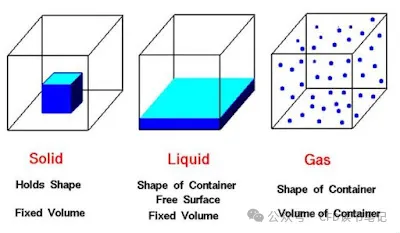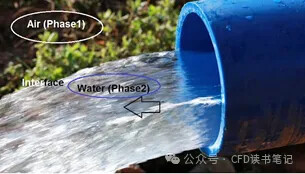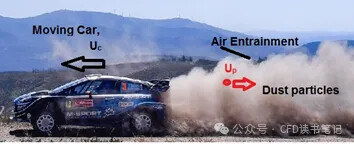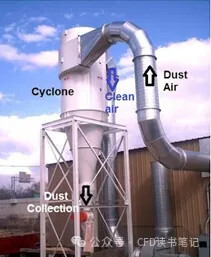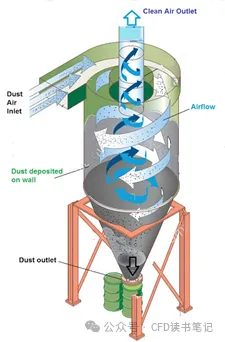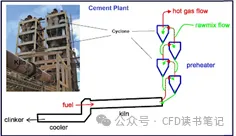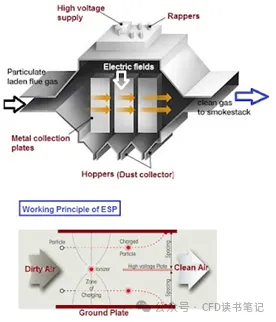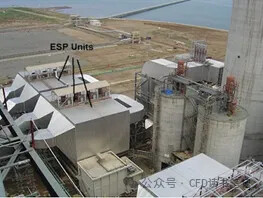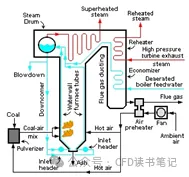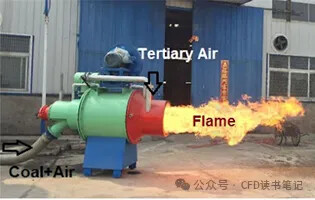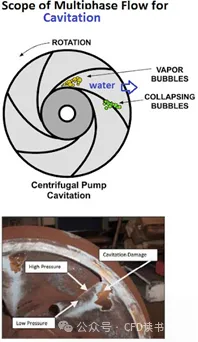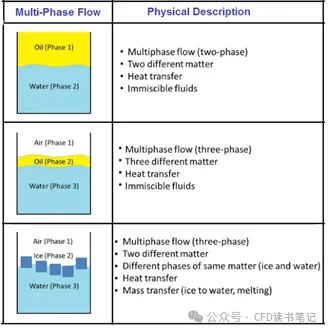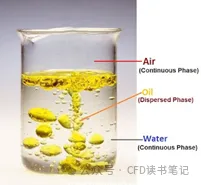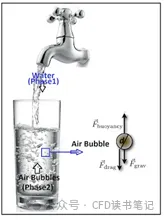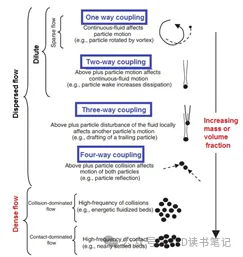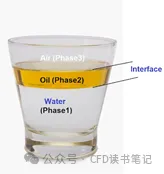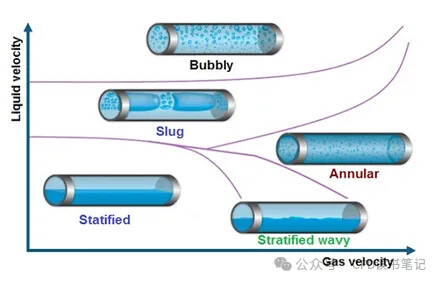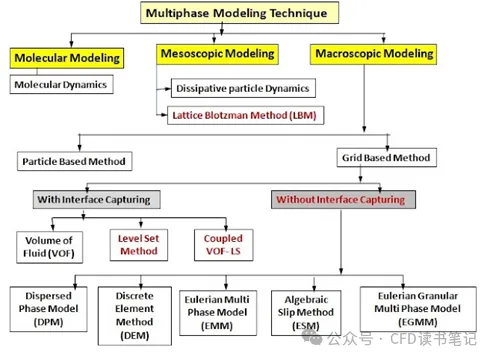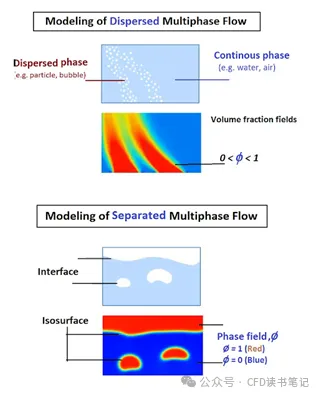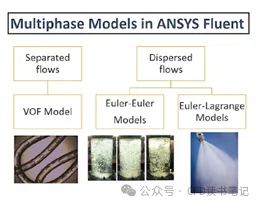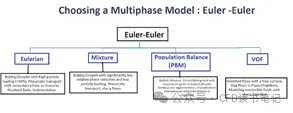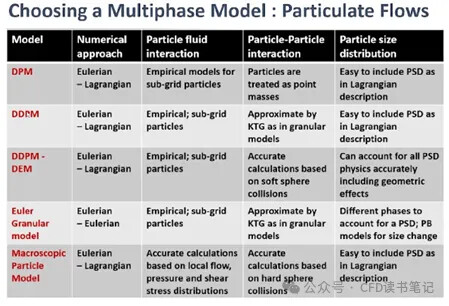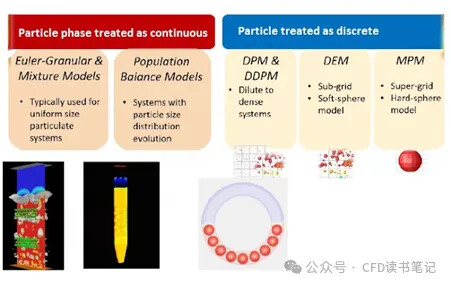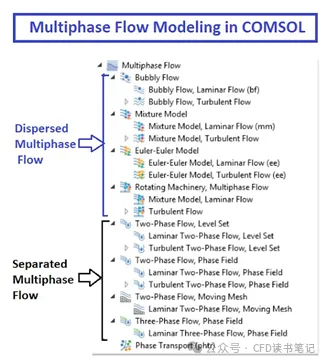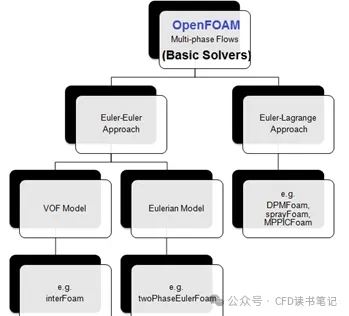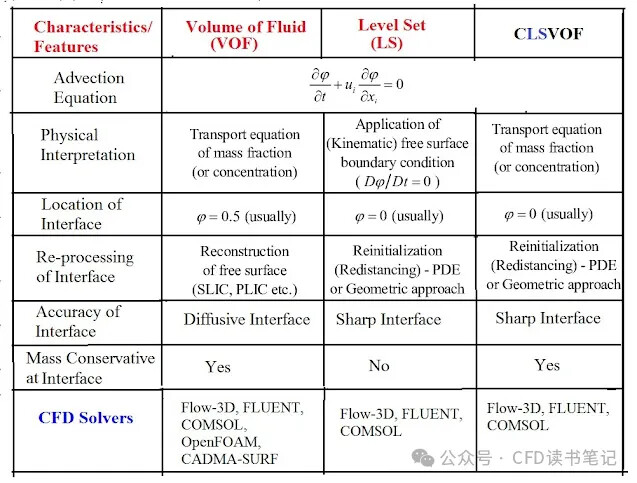1. Introduction
1.1 Phases of Matter
Before undertaking numerical modeling of fluid-related problems, engineers and users must develop a physical understanding of matter, phases, and phase interactions. Matter exists in various phases, such as solid, liquid, and gas. In many fluid flows, two or more phases can coexist. For example, water falling from a faucet interacts with air through surface tension.
- Matter: Defined as any physical structure with mass and volume in space, encompassing all types of physical elements in atomic form (e.g., wood, water, uranium, salt, and dust particles).
- Phase State: The distinct forms of matter are defined within three primary categories:
- Solid: Definite shape and volume.
- Liquid: Definite volume, but shape depends on the container.
- Gas: Shape and volume depend on the container or storage system.
1.2 Definition of Multiphase Flow
- Multiphase flow is defined as the flow of materials with two or more thermodynamic phases simultaneously.
- Examples of multiphase flow: bubble columns, boiling, condensation, and cavitating pumps and turbines.
- Multiphase flow generally consists of two main phases:
- Particulate (Dispersed) Phase: Consisting of bubbles, particles, or droplets immersed in a continuous phase.
- Continuous (Eulerian) Phase: Based on the Eulerian continuum hypothesis, where the continuous fluid can be liquid or gas.
1.3 Phase Interface
- A narrow region observed between phases due to chemical or physical differences is called a phase interface.
- For CFD modeling, a mathematical function representing the interface is often used to distinguish between adjacent phases or materials.
2. Applications of Multiphase Flow
- Industrial Applications: Includes solid drying systems, droplet separation, packed-bed reactors, foam, scrubbers, fluidized beds, cyclones, mixers, and dust collectors.
- Natural Phenomena: Includes rain, rivers, and ocean water flow.
- An example of multiphase flow is the dust flow trailing a moving car.
2.1 Air Cleaning in Cement Plants
- Cleaning the air in cement plants is critical for reducing particulate matter, achieved by using cyclones.
2.2 Controlling Solid Pollutants in Power Plant Flue Gas
- Electrostatic precipitators (ESPs) are widely used in thermal power plants to collect dust and unburned carbon particles from flue gas.
2.3 Coal Combustion in Boilers
- In boilers, coal particles are carried by preheated air into the furnace for combustion. Pulverized coal burners are used to supply both coal and air to produce a flame.
2.4 Cavitation in Pump Impellers
- During water pumping, vapor can form in low-pressure areas within the impeller, causing cavitation. Cavitation issues are studied using multiphase modeling.
3. Classification of Multiphase Flow
3.1 Based on the Number of Miscible Fluids
- Multiphase flows are categorized based on the number of continuous and dispersed phases.
3.2 Flow Characteristics Based on Physical Processes
Multiphase flows can be divided into three major categories based on the physical process and nature of the interaction:
-
Dispersed (Particulate) Flow: A finite number of phases, such as droplets or particles, distributed within a continuous phase.
-
Separated Flow: More than one continuous phase with non-miscible fluids separated by an interface.
4. Basic Terminology and Governing Equations
4.1 Key Multiphase Flow Terms
- Void Fraction / Average Phase Content: Defined as the time-averaged volume fraction of a phase across a channel’s cross-section.
- Superficial Velocity: Defined as the ratio of the phase’s volumetric flow rate to the channel cross-sectional area.
- Mean Phase Velocity: The average velocity of a phase across a channel.
- Flow Mass: Mass flow rate for a given phase within the system.
- Multiphase Density: Represents the mass of the multiphase mixture per unit volume of the channel.
5. Multiphase Flow Modeling
5.1 Approaches for Multiphase Modeling
- Various methods are used in multiphase modeling. CFD users must be familiar with the advantages and limitations of each method.
- Grid-Based Methods: Widely applied in commercial CFD solvers like ANSYS FLUENT, COMSOL Multiphysics, and OpenFOAM.
5.2 ANSYS FLUENT Models:
A detailed overview of multiphase models available in ANSYS FLUENT, including the Eulerian and dispersed models, is essential for users to select the appropriate model based on the problem requirements.
5.3 COMSOL Multiphysics Solver
COMSOL offers solutions for laminar and turbulent multiphase flows, except in cases of three-phase flows and two-phase flows with moving grids.
5.4 OpenFOAM Models
OpenFOAM includes basic multiphase solvers for Euler-Euler and particle flows, and it also allows for customization.
5.5 Interpenetrating Continua Modeling
Different phases are modeled as interpenetrating continua with volume fractions summing to 1.
- Interface Capturing (VOF/LS/CLSVOF):
- This approach is designed for immiscible fluids where interface position is crucial.
- Mixture Model:
- For low-concentration dispersed flows (e.g., bubbles or particles), the mixture model treats phases as interpenetrating continua with relative velocities.
- Eulerian or Multi-Fluid Model:
- Suitable for interpenetrating phases, solving a set of momentum and continuity equations for each phase.
References
- Christopher E. Brennen, Fundamentals of Multiphase Flows, Cambridge University Press, 2005
